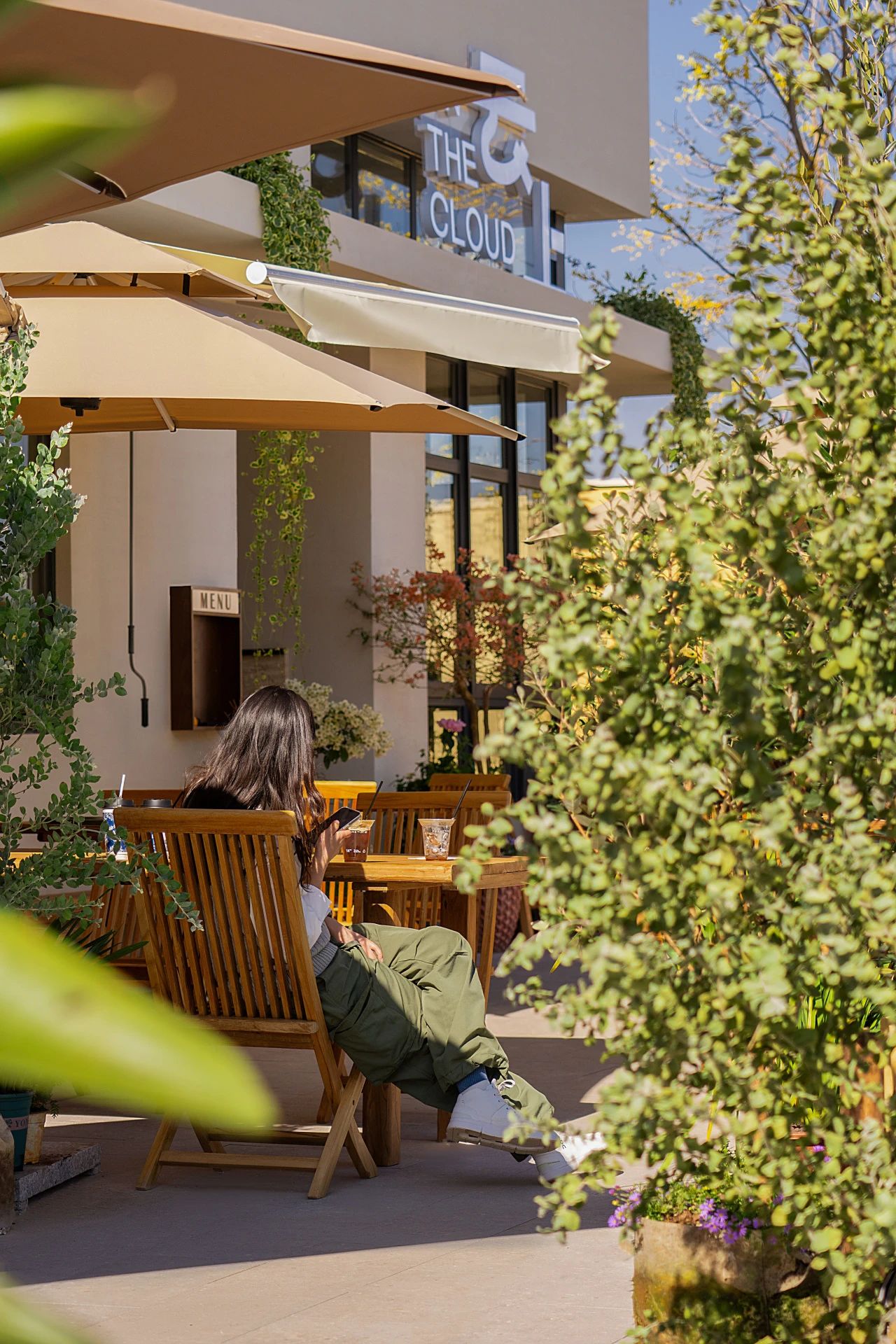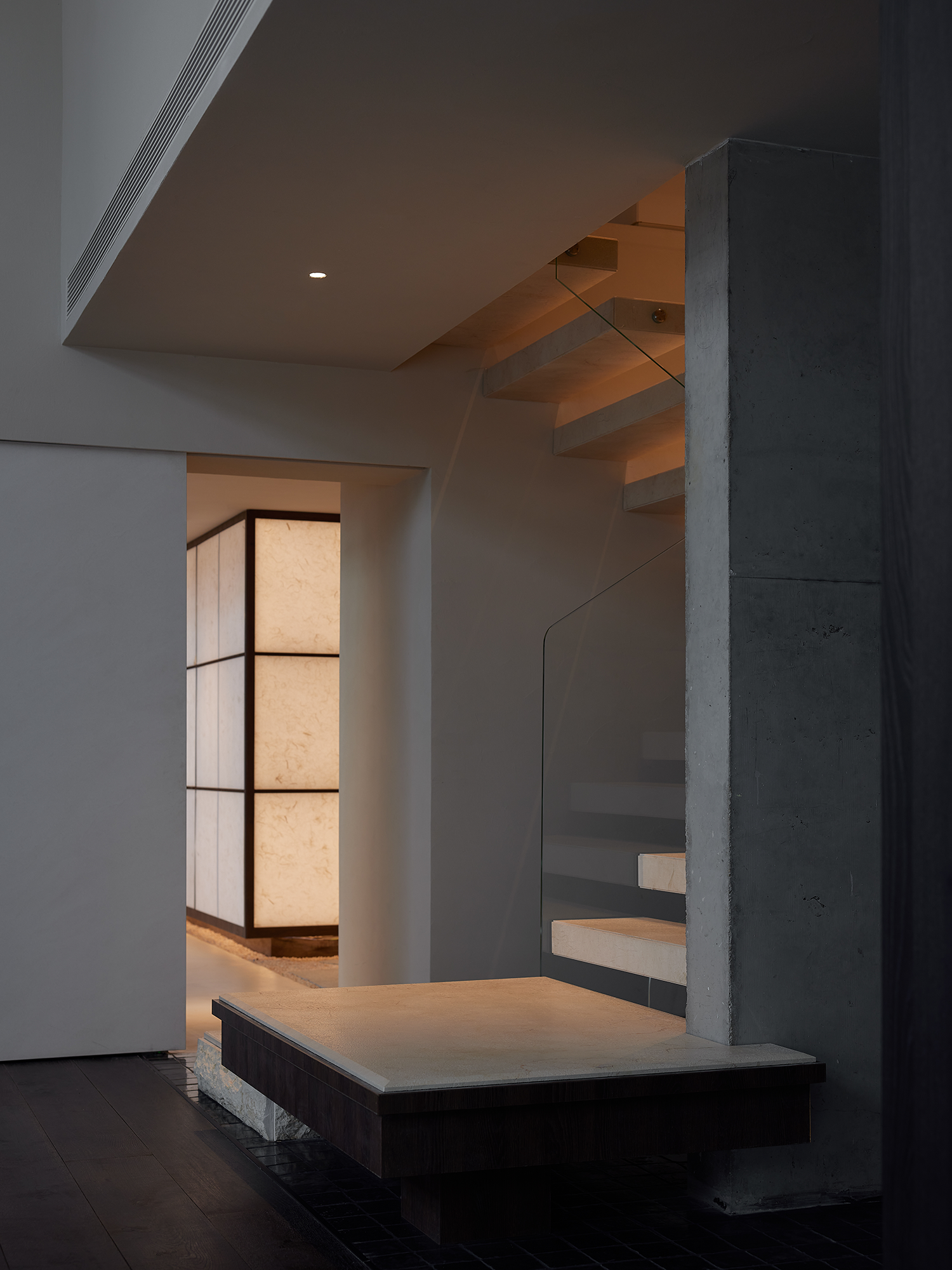Conference Hotel de Botanica Jeanne Dekkers Architectuur
2018-05-28 02:00
Courtesy of Jeanne Dekkers Architctuur
Jeanne Dekkers Architctuur提供


“正宗庄园”的氛围“会泽卑尔根”,加上他们的客人所看到的自然体验,形成了一家新的可持续发展的会议酒店;德·博塔尼察(De Botanica)。“
‘’The atmosphere of the authentic Estate ‘Huize Bergen’ together with the experience of its nature seen by their guests give shape to a new sustainable conference hotel; De Botanica.”
真正的房地产会泽卑尔根是更新,增加了现代和可持续的方式。通过一个分阶段的总体规划,一个三位一体的老别墅,新的植物园,和周围的英国园林。它的建筑和内部物化是从绿色的环境和丰富的历史遗产。此外,所有材料都是可持续和自然的,如未经处理的木材和C2C认证的产品。“植物园”是荷兰第一家按照可持续被动住房原则实现的酒店。第一阶段刚刚结束!
The authentic Estate Huize Bergen is renewed by adding a modern and sustainable manner. Through a phased master plan a trinity will be created between the old villa, the new Botanica, and the surrounding English landscape gardens. The materialization of its architecture and interior is derived from the green surroundings and the rich history of the Estate. Besides all materials are sustainable and natural, such as untreated wood and C2C-certified products. ‘De Botanica’ is the first hotel in the Netherlands realized according to the sustainable passive-house principle. Phase 1 is just finished!
Courtesy of Jeanne Dekkers Architctuur
Jeanne Dekkers Architctuur提供


历史上惠泽卑尔根庄园位于登博什林区。1916年,Fentener van Vlissingen-Roosenburg家族授予委员会建造一座带有别墅、马车房、车间、温室和行政院的英国风景花园。目前,该地产由一个名为Joannes Bosco Sitchting的基金会拥有,并用作会议酒店。老别墅是地产的心脏,受到了所有客人的欢迎。在周围的森林里有70年代的集会和酒店。这些都是倾泻而成的品质,并不是对房地产氛围的赞美。
History The Estate Huize Bergen is situated in the forestry area of Den Bosch. In 1916 the family Fentener van Vlissingen- Roosenburg gave the commission to build an English landscape garden with a villa, coach-house, workshop, greenhouses and an administrators house. Currently, the estate is owned by a foundation named Joannes Bosco Sitchting and is used as a conference hotel. The old villa is the heart of the estate were all guests are welcomed. In the surrounding forest are meeting and hotel venues dating from the seventies. These are poured quality and do not compliment the atmosphere of the estate.
Courtesy of Jeanne Dekkers Architctuur
Jeanne Dekkers Architctuur提供


2014年的任务被决定让房地产未来证明!七十年代的建筑将成为新的会议旅馆的所在地。这里将有新的酒店客房、会议中心和休息室。平日将有多个日会议,在周末是休闲客人的最佳地点。
Task In 2014 was decided to make the estate future proof! The seventies buildings will make the place for a new conference hotel. Herein will be new hotel rooms, meeting center, and a foyer. On weekdays there will be multiple day conferences and during the weekends it is the perfect location for the leisure-guest.
总体规划A由珍妮·德克斯设计的建筑总体规划为整个景观设计奠定了基础,在那里,现有的别墅和新庄园进入了新的对话。一些过时的建筑物将消失,新建筑将分三个阶段实现。总体规划由一个“经验计划”组成,它体现在对景观、老别墅、新庄园及其内部的整体体验中。景观的入口处位于博克瑟尔韦格,使用的是一个门户。从这个地方,可以看到老别墅和新庄园。在这一点上,你决定你的目的地。向新庄园走去,客人开车穿过一条森林小路,朝树之间的停车场走去。一条小径,经过池塘,穿过桥,穿过朝南的露台,通向新庄园。
Masterplan A by Jeanne Dekkers Architectuur designed master plan lays the base for the whole landscape design, where the existing villa and the new manor enter into a new dialogue. A few outdated buildings will disappear, the newly built will be realized in three phases. The master plan is comprised of a ‘Program of Experience’ which is expressed in an integral experience of the landscape, the old villa, the new manor and its interior. The entrance of the landscape is situated at the Boxelseweg using a gateway. From this spot, the old villa, as well as the new manor, can be seen. At this point, you make the decision for your destination. Going towards the new manor the guest drives over a forest path towards a parking situated between the trees. A path leads, past a pond, over bridge via a south facing terrace, towards the new manor.


基本的设计原则,新的植物连接旧别墅和它的景观,通过视线,并通过将历史特征转化为一个当代的新建筑。“de Botanica”的设计将通过一个门厅将现有的两座历史建筑连接起来,并增加两个两翼,一个是举行会议的空间,另一个是与酒店的房间。整座建筑是可持续的,与自然有很强的联系。其次,应用被动式住宅的原理。通过一个非常好的隔离层和良好的气密性,它需要很少的能源来加热或冷却的空间。第一阶段是酒店侧翼,第二阶段是有会议空间的门厅,第三阶段是酒店展厅。
Fundamental design principles The new Botanica connects the old villa and its landscape through sight lines and by translating the historic character into a contemporary newly built. The design of ‘de Botanica’ will create unity by connecting two existing historic buildings by means of a foyer and adding two wings one holding meeting spaces and another with hotel rooms. The whole building is sustainable and in a strong connection with nature. Next to that, the principles of a passive house are applied. By means of a very good isolated layer and good air tightness, it requires little energy for the heating or cooling of the spaces. The first phase will be a hotel wing, the second phase a foyer with meeting spaces and during the third phase, the hotel wing will be extended.
Courtesy of Jeanne Dekkers Architctuur
Jeanne Dekkers Architctuur提供


Ground Floor Plan


Courtesy of Jeanne Dekkers Architctuur
Jeanne Dekkers Architctuur提供


第一阶段:第一阶段从39个酒店客房中分离出来,分为三层。外观是由天然和未经处理的材料制成的,这些材料的年代很吸引人。伊罗科木窗框创造了一个美丽的节奏,在正面由未经处理的落叶松木材覆层和结束与独特的锌湾窗户。室内的颜色和材料来源于“体验计划”,并受到房地产历史的启发。橡木经常应用于结合有特色的颜色和图案托盘,这导致了一个自然和温暖,但豪华的气氛。
Phase 1 The first phase is compromised out of 39 hotel rooms divided into three layers. The façade is made from natural and untreated materials which age attractively. Iroko wooden window frames create a beautiful rhythm in the façade made from untreated larch timber cladding and ending with distinct zinc bay windows. The colors and materials of the interior originate from the ‘program of experience’ and are inspired by the history of the estate. Oakwood frequently applied in combinative with a characteristic color and pattern pallet which results in a natural and warm yet luxurious atmosphere.
Courtesy of Jeanne Dekkers Architctuur
Jeanne Dekkers Architctuur提供


色彩和图案设计源于他们的概念,从热带温室曾经位于新庄园的地点。凡·贝宁夫人对大自然的热爱体现在走廊的离开模式和酒店房间墙壁上的花卉图案上。接下来,设计了四种颜色调色板。西面的房间相对于落日有暖色,而东方的房间相对于日出有冷色。
The color and pattern design originate their concept from the tropical greenhouse once located on the site of the new manor. The love of Madame van Beuning for nature is seen in the leave pattern in the hallway and the flower pattern on the hotel room walls. Next, four color palettes are designed derived from the solstice. The West facing room has warm colors in relation to the setting sun and the East facing rooms have cool colors in relation to the rising sun.
Sunlight Diagram
阳光图


入口处有一层比利时青石楼,可进入三层楼,楼梯可俯瞰森林。通往酒店客房的走廊被设计成一条林间小径,有橡木墙,入口有点灯点,还有一种特殊设计的地毯,带有离开图案。木质地板和特别设计的带有热带植物的壁纸给房间带来了温暖和自然的气氛,有着奢华的吸引力。宽的木制窗框可用作座位,并最终形成一张桌子。
The Interior The entrance has a Belgium bluestone floor which gives access to its three levels and the stairs have views towards the forest. The hallway, which gives entrance to the hotel rooms, is designed as a forest path, with oak wooden walls, light points at the entrance doors and a special design carpet with a leave pattern. The wooden floor and the specially designed wallpaper with tropical plants give the room a warm and natural atmosphere with a luxurious appeal. Wide wooden window frames can be used as seating and culminate into a desk.
Courtesy of Jeanne Dekkers Architctuur
Jeanne Dekkers Architctuur提供


桌面上方的玻璃灯是专为项目设计的,与墙纸的颜色相匹配。床头板和内置衣柜都是由木头制成的,同样也是作为床头柜设计的。现代浴室的六角形墙砖灵感来自旧别墅的六角形屋顶图案。在‘de Botanica’有三种类型的房间:豪华房、分层房和顶层房。分隔层的房间位于第三层,有两层设计与硬锌背窗。
The glass lamps above the desk are specially designed for the project and match with the colors of the wallpaper. The headboard and the built-in wardrobe are made from wood and equally specially designed as the nightstands. The hexagonal wall tiles from the modern bathroom are inspired by hexagonal roof patterns in the old villa. At ‘de Botanica’ are three types of rooms; a deluxe room, a split level room, and a top room. The split level rooms are situated at the third level and have two levels designed with tough zinc dormer windows.
Courtesy of Jeanne Dekkers Architctuur
Jeanne Dekkers Architctuur提供




































































Architects Jeanne Dekkers Architectuur
Location Vught, The Netherlands
Area 1500.0 m2
Project Year 2017
Category Refurbishment
Manufacturers Loading...
























